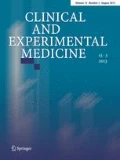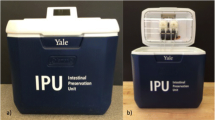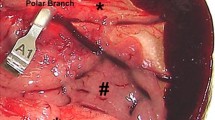Abstract
Ischemia/reperfusion injury plays an important role in the development of graft pancreatitis and thrombosis after pancreas transplantation. Up to now there are few therapeutic options for this severe complication because very little is known about pancreatic ischemia/reperfusion injury. The same pathomechanisms may also be involved in the induction and determination of the course of acute pancreatitis. We observed the effect of 2 h of warm in situ ischemia on the postischemic tissue oxygenation, histological organ damage, and pancreatic enzymes. Experiments were performed in 21 male Wistar rats. In sham-operated animals without ischemia, the pancreas was not dissected. In the ischemic/reperfusion group a pancreatic tail-segment was carefully separated from the head, and ischemia was induced by clamping the splenic vessels for 2 h, after flushing the pancreatic tail-segment with heparinized saline. Animals treated similarly, but with opening of the lamps some seconds after induction of ischemia, served as controls. The animals were observed for 2 h after reperfusion. Tissue oxygenation was monitored by a PO2-sensitive probe (LICOX, GMS, Kiel, Germany) which was implanted into the pancreatic tissue. Blood samples were taken before, 5 min, 60 min, and 120 min after reperfusion. At the end of the experiment the pancreatic tail was excises for histological examination; biopsies from the non-ischemic pancreatic head served as intraindividual control to exclude side effects on the non-ischemic pancreatic head. In the ischemia/reperfusion group, PO2ti was significantly lower 1 h (18.0±1.7 mmHg) and 2 h (16.4±1.6 mmHg) after reperfusion compared with baseline conditions (32.8±5.2 mmHg) and the control group (1 h 30.6±1.9 mmHg, 2 h 32.4±2.4 mmHg). Histological injury score and plasma lipase activity were significantly higher in the ischemia/reperfusion group compared with the control group. Thus we describe a new experimental model of complete normothermic in situ ischemia of a pancreatic tail-segment with the possibility of flushing the pancreatic tail-segment and selective local application of drugs to the pancreas.
Similar content being viewed by others
Author information
Authors and Affiliations
Additional information
Received: 20 September 2000 / Accepted: 15 December 2000
Rights and permissions
About this article
Cite this article
Obermaier, R., Benz, S., Kortmann, B. et al. Ischemia/reperfusion-induced pancreatitis in rats: a new model of complete normothermic in situ ischemia of a pancreatic tail-segment. Clin Exp Med 1, 51–59 (2001). https://doi.org/10.1007/PL00012237
Issue Date:
DOI: https://doi.org/10.1007/PL00012237




